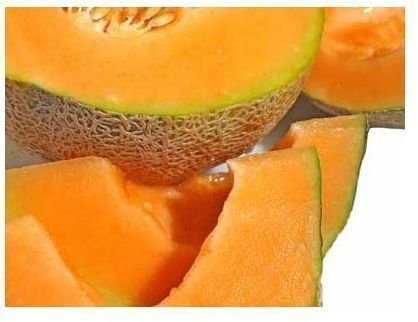Cantaloupe: Nutritional Facts and Serving Suggestions for Cantaloupe
Cantaloupe: Nutritional Information
Cantaloupe, also known as muskmelon (and even rock melon in some parts of the world), belongs to the Curcurbitaceae melon family: the same family that pumpkins, gourds and cucumbers are part of. Cantaloupe is a delicious, sweet orange fruit, rich in nutrition. One cup of juicy cantaloupe cubes contains the following nutritional elements:
- Only 54 calories
- 1 gram of dietary fiber (6% of your daily needed amount)
- 108% of your body’s daily recommended intake of vitamin A
- 98% of your body’s daily recommended amount of vitamin C
Cantaloupe is also a good source of Potassium, and in addition, is one of the very few fruits that is rich in the B-vitamins including B1 (thiamine), B3 (niacin), B5 (pantothenic acid), and B6 (pyridoxine).
Due to its nutritional makeup, cantaloupe can offer health benefits to all. This fruit can decrease one’s risk of heart disease, cancer, insomnia, high blood pressure and arteriosclerosis. Thanks to its high concentration of vitamin C, cantaloupe increases the effectiveness of the body’s immune system. It is also a great food for pregnant women because it is rich in folic acid (necessary for fetal brain development), and it helps reduce water retention that causes swelling.
Cantaloupe: Selecting, Storing and Serving
How can you select the very tastiest cantaloupe? First, keep in mind that cantaloupe will usually taste the best during its peak growing season of June to September (even though most supermarkets and grocery stores will carry cantaloupes during other times of the year as well). Select a cantaloupe that is firm, but not too hard, and definitely not one that is soft and yellowing. Choose a heavy melon with a fragrant smell.
Once you’ve chosen your melon, make sure to scrub it under running water before using it. If your cantaloupe is firm, you can leave it out of the refrigerator for a few days, allowing it to ripen, but once it is cut, it should be covered and refrigerated if it is not used immediately.

To prepare cantaloupe for serving, slice the whole fruit in half and scoop out and discard the seeds in the middle. Cut the cantaloupe into wedges and carefully remove the rind from each wedge with a small paring knife. You can then serve the cantaloupe in slices or cut into smaller chunks. Another option is to use a melon spoon to scoop small balls of melon out of the rind, once you have removed the seeds from the center of the cantaloupe.
Here are some delicious serving suggestions for cantaloupe:
- Combine chunks of cantaloupe with sliced strawberries, sliced kiwi, and chunks of watermelon and pineapple for a beautiful and delicious summer fruit salad.
- Serve finely-chopped cantaloupe with yogurt and, if desired, a drizzle of honey.
- Mix freshly-squeezed cantaloupe juice with sparkling water for a sweet, healthy and refreshing drink.
